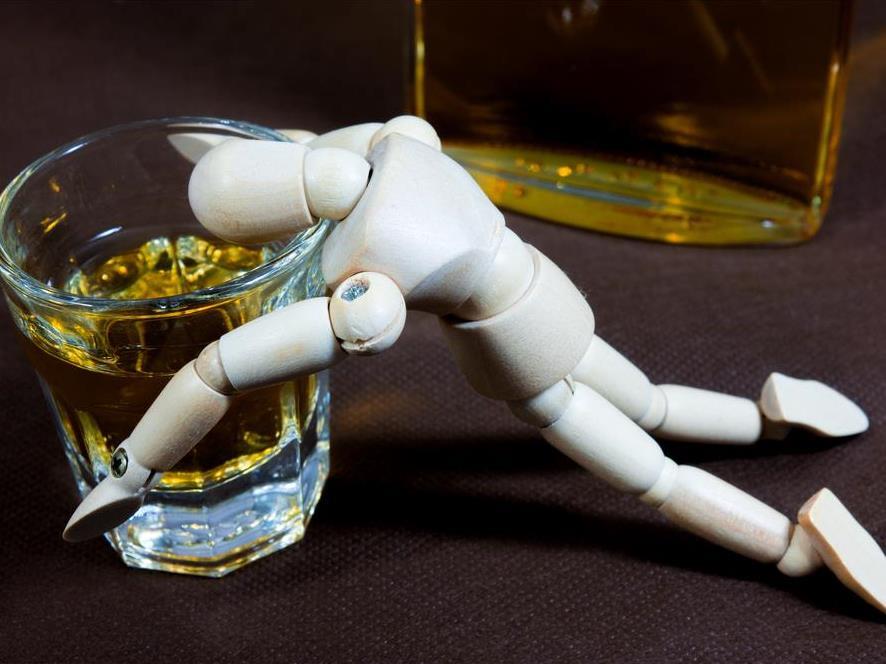Image via Shutterstock
Australians have a problematic relationship with alcohol. From barbecues to the opera, drinking permeates all levels of Australian society, with binge drinking and drinking to get drunk causing both health and social problems. According to statistics released by the Australian Medical Association WA, on an average day, alcohol causes 15 deaths and hospitalises 430 Australians. And while overall alcohol consumption in Australia declined between 2001 and 2013 and the majority of Australians drink responsibly, alcohol consumption among the heaviest drinkers actually increased over the same period.
Actors and other creatives are particularly at risk of dangerous levels of alcohol consumption. Actors are ‘basically drinking [themselves] to death,’ members of the the 2015 Australian Theatre Forum were told.
Read: Keeping theatre makers safeDr Mark Seton sits on the Executive Committee of the Australian Society for Performing Arts Healthcare (ASPAH). An Honorary Research Associate at the University of Sydney’s Department of Theatre and Performance Studies, Seton was a co-researcher in the University’s 2013 Actors Wellbeing Survey, which questioned participants on a range of topics, including their alcohol use.
Of the 578 participants who responded to specific questions about alcohol use, ‘a significant percentage of them are drinking at a hazardous level,’ Seton told ArtsHub.
‘About half – that’s about 58% of men and 35% of women … were exceeding the recommended, healthy, appropriate and responsible use of alcohol. So that’s significant, and that warrants concern.
‘Now in comparison, if you’re comparing that just to the population of Australia in general, 17% of Australians – that’s 26% men and 9% of women – did the same, were drinking about the same. So whereas in the general population 9% of women are drinking above the recommended dose, 35% of actresses are doing the same. And if you’re comparing it to 26% of men in the population of Australia who are exceeding the recommendation, it’s roughly twice that [among actors], about 58% of men.’
These concerning statistics are supported by the recent national survey conducted by Entertainment Assist, which identified higher than average levels of drug and alcohol consumption across the performing arts sector – not just in actors but in stagehands, musicians, roadies and others.
Entertainment Assist’s study also noted poor mental health and a high risk of self-harm among its survey respondents.
Read: Arts workers ‘twice as likely’ to attempt suicide
Greta Bradman, a provisional psychologist, performing artist, and member of the Arts Wellbeing Collective Advisory Group, said: ‘[The] Entertainment Assist research of Australian performing arts workers (both performers and non-performers) has found that there is a higher proportion of people in the performing arts, relative to the general population, who undertake what is called high risk drinking behaviour – drinking more than 11 standard drinks in one day. In fact, the number of people in the performing arts who drink to these high levels is around double that of the general population (32% versus 15.2%).
‘Alongside that, performing artists and those in the performing arts are more likely to consume alcohol on a weekly basis than those in the general population, and when they drink they tend to drink more than do members of the general population.
‘Qualitative research findings point towards a certain normalisation of higher levels of alcohol consumption, whereby the consumption of three to four glasses a night is considered by some as relatively normal when in actual fact consuming that amount on a regular basis is a relatively high consumption, which brings with it some risk factors both for aspects of physical and mental health,’ she said.
Not so smart
Performers who responded to the Actors Wellbeing Survey are not only drinking at higher levels than the general public; their alcohol consumption was also at odds with the average Australian in other ways.
‘We actually found in our survey that in contrast to the general population, actors who have higher levels of education in the performing arts, and higher income from performing specifically, tend to drink more alcohol. So that’s actually in contrast to the general population, where you find people of lower economic status, have had less education, might drink more alcohol. But here we found in contrast to that, so that was interesting,’ said Seton.
‘We also found that age didn’t have a strong relationship with regards to the amount of alcohol used, unlike the general population, where younger people drink more than older people – that pattern was not the same in actors.’
Why we drink
Cellist Camilla Tafra, a former ASPAH committee member, notes that risky levels of alcohol consumption are common among her peers.
‘I’ve seen a lot of classical musicians use alcohol to relax after performances in which we have been engaged in such a high level of focus, with adrenaline pumping, that we feel it is hard to calm down and recover without having some drinks after we leave the stage,’ Tafra said.
‘In my experience it’s not just the default way to celebrate, but is also viewed as a “must” for professional networking. Believe it or not, in the classical music world if you want to socialise and build networks with top musicians you meet and work with, you’re probably going to need to party with them in some way to show not only that you can do your job well, but you know how to have a good time too.’
Heavy drinking also has an economic impact on musicians, Tafra added. ‘Frequent alcohol use impacts on people mentally and physically and, for musicians who often have low and/or unstable incomes, the expense of alcohol can seriously eat away at our finances. I’ve often seen this happening without much awareness, one day someone will be stressing about making rent, then that evening they’ll spend upwards of $80 on drinks to wind down after a performance.’
Self-medicating with alcohol as a way of dealing with stress, anxiety, depression and sleeplessness is not uncommon, Bradman noted. ‘Unfortunately whilst there may be some short-lived perceived reduction in such problems there’s a host of research that demonstrates that alcohol tends to exacerbate and perpetuate emotional and psychological problems and it is vital to seek out more adaptive coping mechanisms in order to establish longer term improvement.’
She also noted that using alcohol to assist with sleep or ease stress was problematic, for a number of reasons.
‘First is the issue of building up tolerance so that the initial release of endorphins that comes with alcohol consumption is, after a period of regular alcohol consumption, only achieved by increasingly upping the dose of alcohol. Any positive effect is not sustainable and makes way for the downside. The “relaxing” effect or mood enhancing effect of alcohol becomes increasingly difficult to achieve. Increasing the intake of alcohol brings with it greater risks of physical health problems, and problems with mood, anxiety, and sleep disturbance, as well as engaging with riskier behaviours,’ she said.
‘And the problem around using alcohol as a tool for inducing sleep is that whilst alcohol might have a sedating effect and give the impression of helping someone get to sleep, it inhibits good quality sleep, by keeping a person in stage 1 and 2 sleep. That glorious deep sleep – the stuff that leaves you feeling well rested (stage 3 and 4 sleep including REM sleep) – won’t come as it is inhibited by alcohol consumption. The release of growth hormone is inhibited and all the restorative functions that take place during sleep are inhibited. Missing out on stage 3 and 4 sleep leaves someone with a feeling of having slept badly, or having hardly slept at all, as well as oftentimes feeling dehydrated too. In fact research suggests that the feeling of a “hangover” is in part the effect of sleep deprivation and not just the direct effect of the alcohol and its other impacts on the brain and body.’
Happy hours
Bradman went on to note that there are unique factors involved with working in the arts that can encourage drinking – and also noted that in moderation, drinking is not by itself inimical.
‘Given the work hours and the intensity of work within the performing arts, perhaps especially for those involved directly around the show such as the technical staff, front of house staff, and performers, and others involved in a show who are present at the show itself, it’s understandable that we don’t wind down straight away,’ she said.
‘A hair and makeup artist of mine for an opera described the necessity for a period of post-show wind-down by saying, “you wouldn’t expect someone who works 9-5 to get home and be ready for bed at 6pm or 6.30pm, so why would you think it’s any different when you finish work at 11pm at night? It still takes time to wind down after work”.
‘That is to say, socialising and debriefing post-show can be an important part of maintaining good mental health – it’s just the “how” we go about it is the thing that makes the difference longer-term around whether it’s a sustainable, adaptive and promotes good mental health and wellbeing, or whether it’s practice that erodes our mental and physical health and wellbeing and impacts on our relationships and our ability to do good work. We need to be mindful of the sustainability of our behaviours and remember that as creatures of habits, what we “do” will play into the habits we form and the life we embody.’
The unique challenges of working in the arts were also highlighted by respondents to the University of Sydney’s Actors Wellbeing Survey, Seton said.
‘We did ask if alcohol consumption was related to work stress and that was significant enough to be included as a mention, that among the respondents, alcohol drinking was related to work stress as a performer. And that was particularly pronounced amongst those performers who drink at either harmful or risky levels. So there was certainly a relationship to the particular stressors in performance,’ he noted.
Towards a healthier drinking culture
As a general guideline for healthy alcohol consumption, the National Health and Medical Research Council’s 2009 Australian Guidelines to Reduce Health Risks from Drinking Alcohol notes: ‘For healthy men and women, drinking no more than two standard drinks on any day reduces the lifetime risk of harm from alcohol-related disease or injury.’
Having at least two alcohol-free days a week is also commonly recommended by general practitioners.
Are there more creative steps those of us working in the arts sector could also adapt, in order to encourage a healthier drinking culture?
‘I think some of the steps that need to be taken to get performing artists moving away from alcohol use include giving them skills to perform without overwhelming levels of anxiety and to wind down after performances, and helping them understand the connection between their health and wellbeing and the sustainability and quality of their performance,’ said Tafra.
‘But there are also structural and broader social issues at play here. Musicians are often underpaid in their profession and forced to live from contract to contract, working various jobs to cover costs while trying to move forward in their careers and maintain their performance skills.
‘I think these stresses and strains often lead people (consciously or not) to drink as they see it as the only way to forget these troubles for a moment. In addition to this, I really see a broader problem in the attitude to drinking in Australia in general which makes it incredibly difficult for anyone to quit or decrease their drinking when it is considered a necessary aspect of any social event,’ she said.
Bradman spoke of the importance of educating ourselves and each other, and of taking ‘time to reflect on our intake – the “why/where/when/how/who” type questions about how and why we use these substances, and thinking about the role they play in our life and a bit of a cost benefit analysis on how and whether they’re contributing positively or negatively.
‘We can reflect on our goals and values and how our alcohol and drug use impacts on where we’re going, what we want to achieve in our life (professionally, personally, in our relationships too). We can think about what our use is doing to our effectiveness in our work and in our lives,’ she said.
New models
Dr Seton and his colleagues at the ASPAH are keen to encourage responsible consumption of alcohol in the performing arts. Moving away from the existing model of free alcohol at launches, exhibition openings and opening nights could be one approach to consider.
‘It doesn’t necessarily have to be a dry event but … those who do actually have some struggle with alcohol are going to find themselves struggling at many an opening night because of their willingness to drink or their desire to drink a lot – particularly when often at launches alcohol is free, so there’s no cost disincentive to stop drinking,’ he said.
‘I wouldn’t want our concern as people who are advocating for health and wellbeing practices within the creative arts to be seen as wowsers. We’re not saying “stop drinking” but we are saying, “let’s be more conscious as a creative community of the ways in which people use alcohol”.
Bradman observed that there is a broader conversation to be had – indeed, it has already started – around positive, constructive strategies, tools and techniques that performing arts workers can use to help reduce stress and symptoms of depression and anxiety, and to help them with sleep issues, and which do not involve the use of alcohol or drugs to regulate mood or energy.
Read: Major new initiative targets wellbeing in the arts
‘Alongside this we need greater understanding of what is healthy alcohol intake and what is excessive or unhealthy, so as to shift away from any normalisation of excessive alcohol consumption or drug use,’ she said.
‘I am inclined to think that in a liberal society where alcohol is an accepted and normalised part of social life, it wouldn’t be appropriate or necessary to take a hard line approach such as alcohol free launches or the like – indeed taking such a hard line approach may backfire [or] be counterproductive. As an artist, I would find it patronising to have the choice of alcohol or no alcohol taken away from me at a launch.
‘I do believe though, for such occasions, that one fun change-up might be to have more sophisticated, creative non-alcoholic drinks alongside the alcoholic offerings. This would naturally facilitate the pacing of alcohol intake with non-alcoholic beverages and offer something fun and new in keeping with the playful, creative, celebratory centre of what such occasions in the arts are all about. Incentivise the consumption of non-alcoholic beverages alongside consumption of alcoholic offerings. Orientate to the creative, playful side of such occasions!’
If you believe you are at risk of alcohol dependency please speak to your GP. The Department of Health and Aging’s Quick Reference Guide to the Treatment of Alcohol Problems may also prove helpful.
Arts Wellbeing Collective
www.artswellbeingcollective.com.au
Australian Society for Performing Arts Healthcare
www.aspah.org.au
Entertainment Assist
entertainmentassist.org.au






